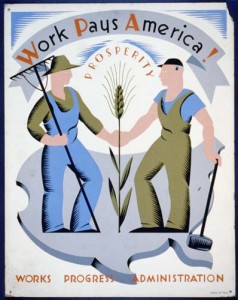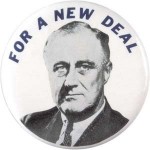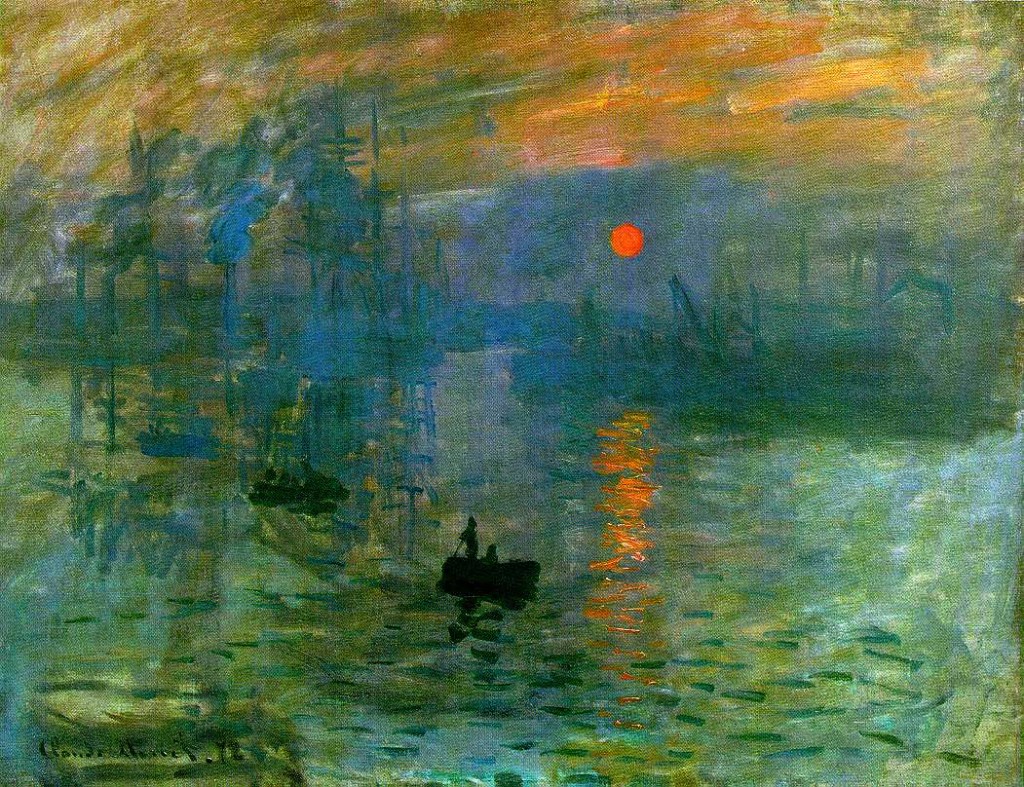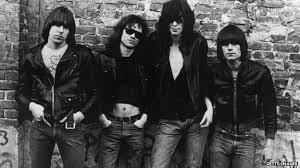 Crises have a way of bringing out the best or the worst in people, and in societies, and in cultures. There’s rarely a middle ground, and there’s rarely any ambiguity to it. You might think of them as litmus tests for collective character.
Crises have a way of bringing out the best or the worst in people, and in societies, and in cultures. There’s rarely a middle ground, and there’s rarely any ambiguity to it. You might think of them as litmus tests for collective character.
Economic crises, as recent experience has shown, tend to rub rawest. They strike average people the hardest, and leave those people all but powerless while destroying their ability to cope with the present or to strive for the future. Being products of amorphous “market forces” they rarely create a rallying figure, an enemy to fight, a cause to muster for or against. Their effects, usually, are internalized. We’re all left to fight, or more often to founder, alone.
But it hasn’t always been like that.
The worst economic crisis in modern history began, arguably, in 1929—it spread around the world and lasted for more than a decade. Its precise causes are debatable but it is generally agreed that it started with the collapse of American markets (the Black Tuesday stock market crash in October 1929 was a symptom, not a cause), as well as the failure American banks, and was fatally exacerbated by rampant unemployment. At the midway point of what was by then being called the Great Depression, 15 million Americans—representing almost a quarter of the working class—were unemployed, and nearly half of American banks had closed their doors forever.
Politics, as ever, was handmaiden to economics; and political gutter-fighting, then as now, impeded economic policy. A major difference, beginning in 1932, was leadership. The election of Franklin Roosevelt brought fresh perspectives and new ideas. His radical solutions were by no means universally embraced, but they (and more importantly, he) were popular enough to clear the way for unprecedented experimentation: economic stimulus backed by the full force of the federal treasury.
policy. A major difference, beginning in 1932, was leadership. The election of Franklin Roosevelt brought fresh perspectives and new ideas. His radical solutions were by no means universally embraced, but they (and more importantly, he) were popular enough to clear the way for unprecedented experimentation: economic stimulus backed by the full force of the federal treasury.
Under the general banner of The New Deal, managed by an array of novel Alphabet Soup agencies, and exemplified by the WPA (Works Progress Administration), America rolled up its sleeves and got back to work.
Recent experience, again, has shown that controversial is the kindest possible term for the idea that federal dollars (and more importantly, federal oversight) can lead to economic recovery. And it would be controversial, or at least impossible to prove, to say that the New Deal overcame the Great Depression.
But what is beyond debate is this: it put people back to work.
If you know where to look, you can still find the legacy of the New Deal in every state, in nearly every city and town. Schools, libraries, roads, bridges—massive infrastructure projects and tiny improvements on the landscape. It was all created by collective effort, in a collective struggle to rebuild a wounded country.
town. Schools, libraries, roads, bridges—massive infrastructure projects and tiny improvements on the landscape. It was all created by collective effort, in a collective struggle to rebuild a wounded country.
As evidence of the farsightedness of these programs (you might call it progressive, which had not yet become a dirty word), they recognized that it wasn’t just the laborer who was suffering, and it wasn’t only the laborer who could contribute.
The Federal Arts Project, an extension of the WPA, began in 1935 to employ out-of-work painters, sculptors, and art teachers in public works projects and programs. The idea is almost unthinkable now, but it recognized two truths: that art is funded by surplus (and thus, it withers during lean times), and that it is culturally worthy of support.
 Nearly a quarter of a million works of art—murals, posters, public sculptures—were created. Among the most iconic were the inspirational murals, often gracing the walls of new WPA-constructed post offices. The style was realist, modern, unceasingly optimistic. Created of necessity—it was essentially the mode of anti-Depression propaganda—it became a fashion unto itself, one that’s still mightily influential today.
Nearly a quarter of a million works of art—murals, posters, public sculptures—were created. Among the most iconic were the inspirational murals, often gracing the walls of new WPA-constructed post offices. The style was realist, modern, unceasingly optimistic. Created of necessity—it was essentially the mode of anti-Depression propaganda—it became a fashion unto itself, one that’s still mightily influential today.
Sadly, preservation of these works has never been a national priority. Their neglect almost gives credence to the argument that they were nothing but busy-work for the Jackson Pollocks and Mark Rothkos employed by the WPA; an embarrassing artists’ welfare program, best forgotten. The vast majority of the original artwork is simply gone.
national priority. Their neglect almost gives credence to the argument that they were nothing but busy-work for the Jackson Pollocks and Mark Rothkos employed by the WPA; an embarrassing artists’ welfare program, best forgotten. The vast majority of the original artwork is simply gone.
So be it. Public art and public-art funding are, as demonstrated, controversial, and it’d be a long-shot on a good day to get all Americans, or even a respectable plurality, to grow sentimental over what can be reasonably termed ‘artistic socialism.’ Such a movement can probably never happen here again.
But I’m writing these words on an American public holiday, one that for some smells of socialism, and for others represents a grudging nod to the value of the U.S. working class. I can think of no better day than Labor Day to remember that once upon a time, art was labor.
 We’ll never see public arts sponsorship on this scale again, and there’s a sad but distinct chance we won’t see its production, its original output, for very much longer. I can’t say if that’s the result of neglect or purposeful design, but either way this legacy is being erased.
We’ll never see public arts sponsorship on this scale again, and there’s a sad but distinct chance we won’t see its production, its original output, for very much longer. I can’t say if that’s the result of neglect or purposeful design, but either way this legacy is being erased.

*
Best we can do, I suppose, is remember it. And maybe while we’re doing so we can ponder what that program said about America then, and what its disregard says about us now.
 Impressionism is arguably the most influential artistic movement of the last half millennium. It represented a stylistic break with the rigid Realism that preceded it, and inspired in its wake not only the techniques and subject matter embraced by visual artists, but also the writers, musicians, and philosophers who’ve shaped our modern culture. A textbook definition of Impressionist painting might speak of abbreviated brush-strokes and the unblended use of color to capture fleeting conditions of light and atmosphere—and it would be correct in doing so. But in broader, and maybe much more accurate terms, Impressionism is nothing more or less than a worldview. It’s a way of describing what the eye sees and the heart feels, denying the simultaneous tugs of jadedness and exuberance, and opting instead for the middle road of studied attention.
Impressionism is arguably the most influential artistic movement of the last half millennium. It represented a stylistic break with the rigid Realism that preceded it, and inspired in its wake not only the techniques and subject matter embraced by visual artists, but also the writers, musicians, and philosophers who’ve shaped our modern culture. A textbook definition of Impressionist painting might speak of abbreviated brush-strokes and the unblended use of color to capture fleeting conditions of light and atmosphere—and it would be correct in doing so. But in broader, and maybe much more accurate terms, Impressionism is nothing more or less than a worldview. It’s a way of describing what the eye sees and the heart feels, denying the simultaneous tugs of jadedness and exuberance, and opting instead for the middle road of studied attention.


 First thing I thought, upon hearing that Robin Williams was gone, was that he’d been making me laugh for as long as I can remember.
First thing I thought, upon hearing that Robin Williams was gone, was that he’d been making me laugh for as long as I can remember.


























 You’ve been working very very hard, haven’t you? Poor thing, I know exactly how you feel.
You’ve been working very very hard, haven’t you? Poor thing, I know exactly how you feel.
 It seems we really did dodge an
It seems we really did dodge an  the severity of such events, determined in part by magnetometer readings at the equator. The baseline reading of the planet’s magnetic shield (when undisturbed) is zero; solar impacts knock it into negative numbers. The most routine events, the kind that produce the Northern Lights, register at about -50.
the severity of such events, determined in part by magnetometer readings at the equator. The baseline reading of the planet’s magnetic shield (when undisturbed) is zero; solar impacts knock it into negative numbers. The most routine events, the kind that produce the Northern Lights, register at about -50. of flipping the switch back on once the storm had passed. Repairs could take months or years.
of flipping the switch back on once the storm had passed. Repairs could take months or years. circa 1800, with no frame of reference or collective experience for surviving in such a world.
circa 1800, with no frame of reference or collective experience for surviving in such a world. share. Financial and health records, much of the documentation of our very existence, are completely virtual—and evidently, completely vulnerable. Modern writers and digital artists personify the cultural side of this risk: our entire portfolios could disappear forever, in an instant.
share. Financial and health records, much of the documentation of our very existence, are completely virtual—and evidently, completely vulnerable. Modern writers and digital artists personify the cultural side of this risk: our entire portfolios could disappear forever, in an instant. If you’ve had any exposure to the news over the last week or so, you know things seem to have gotten
If you’ve had any exposure to the news over the last week or so, you know things seem to have gotten  Ballet Hispanico is not boring. I learned that almost immediately. And it’s not ballet, or at least not the sort of ballet I’d built up my prejudices against. How to describe it? To call it modern dance is probably accurate, but an almost too trite and predictable label. It is thoroughly modern, yet still thoroughly mindful of the ageless Latin dance roots from which it draws inspiration. Clearly I lack the experience and expertise to play dance critic, so I’ll probably have to admit that a legitimate analysis is simply beyond me. Besides, I was, as I’ve said, entranced. Analysis would have been beyond me in any case.
Ballet Hispanico is not boring. I learned that almost immediately. And it’s not ballet, or at least not the sort of ballet I’d built up my prejudices against. How to describe it? To call it modern dance is probably accurate, but an almost too trite and predictable label. It is thoroughly modern, yet still thoroughly mindful of the ageless Latin dance roots from which it draws inspiration. Clearly I lack the experience and expertise to play dance critic, so I’ll probably have to admit that a legitimate analysis is simply beyond me. Besides, I was, as I’ve said, entranced. Analysis would have been beyond me in any case. Hispanico won me over—with the story-in-motion unfolding on stage. I won’t pretend I grasped every nuance of every figurante vignette; Ballet Hispanico and I are, in more than one way, worlds apart. But their story, and their storytelling, invited me in to their world. And for that I’m grateful beyond my ability to express.
Hispanico won me over—with the story-in-motion unfolding on stage. I won’t pretend I grasped every nuance of every figurante vignette; Ballet Hispanico and I are, in more than one way, worlds apart. But their story, and their storytelling, invited me in to their world. And for that I’m grateful beyond my ability to express.


 Correct me if you must that he was born Erdélyi Tamás. Insist if you must that he and Johnny and Dee Dee and Joey weren’t really brothers.
Correct me if you must that he was born Erdélyi Tamás. Insist if you must that he and Johnny and Dee Dee and Joey weren’t really brothers.

 Whether or not you enjoy the electronic oscillating tones of the twentieth century’s weirdest contribution to musical invention, you have to admit: the rise of the horror film wouldn’t have been possible (or at least wouldn’t have been the same) without it.
Whether or not you enjoy the electronic oscillating tones of the twentieth century’s weirdest contribution to musical invention, you have to admit: the rise of the horror film wouldn’t have been possible (or at least wouldn’t have been the same) without it. somehow, consistently, find the cuteness in the most diabolic devices.
somehow, consistently, find the cuteness in the most diabolic devices. nestled it inside a Russian nesting doll (matryoshka) and called it a
nestled it inside a Russian nesting doll (matryoshka) and called it a  What do you make of a movement that purports to be intellectual,
What do you make of a movement that purports to be intellectual,  dismiss them,
dismiss them,  disproportionately represented), they’re tech-savvy, with quite a few of them, including
disproportionately represented), they’re tech-savvy, with quite a few of them, including 
 aren’t likely to forget the
aren’t likely to forget the  resisting a threat to your species’ existence, when the impact is
resisting a threat to your species’ existence, when the impact is  point where, it seems, our best hopes are mitigation and adaptation. It might not work, and it might not be enough.
point where, it seems, our best hopes are mitigation and adaptation. It might not work, and it might not be enough.